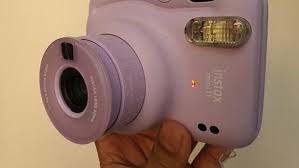How to Safely Clean Your Ears

Introduction
Your ears are delicate organs that require proper care and attention. Proper cleaning of your ears is essential to maintain overall ear health and prevent issues like earwax blockage, infection, or even hearing loss. However, many people are unsure about the safest way to clean their ears. In this article, we will discuss how to safely clean your ears while minimizing the risk of damage.
1. Understanding Earwax
Earwax, also known as cerumen, is a natural substance produced by glands in your ear canal. It plays an essential role in protecting your ears from debris, bacteria, and infection. Earwax naturally moves outward over time and is washed away during regular bathing or showering. However, excessive earwax build-up can lead to blockage or discomfort.
2. When to Clean Your Ears
Most people do not need to clean their ears frequently, as the earwax will move out of the ear naturally. However, if you have symptoms such as earache, muffled hearing, tinnitus (ringing in the ear), itching, or discharge from your ear, it would be best to consult a healthcare professional for guidance on proper ear cleaning.
3. Ways to Safely Clean Your Ears
a) Wiping with a Washcloth:
The safest method is to simply wipe the outer part of your ear with a damp washcloth to remove any visible wax or dirt. Avoid inserting anything into the ear canal or using cotton swabs, as they may push the wax deeper into the canal and increase the risk of damage or infection.
b) Ear Drops:
Over-the-counter ear drops made specifically for softening and removing excess earwax can be used according to package instructions for safe cleaning at home. These drops usually contain mineral oil or a mild hydrogen peroxide solution that helps dissolve the wax for easy removal.
c) Earwax Removal Kits:
These kits often include a bulb syringe for irrigation and a container to catch water and wax. Fill the bulb syringe with warm water, tilt your head sideways, and gently flush the ear canal until the blockage is gone. Always follow the manufacturer’s instructions when using these kits to ensure safety.
4. When to Consult a Professional
If you continue experiencing symptoms or have concerns about your ear health, consult a healthcare professional such as an audiologist or an ear, nose, and throat (ENT) specialist. They can safely remove earwax build-up using safe methods like suction, specialized tools, or microsuction.
Conclusion
Remember that your ears are delicate and sensitive organs. Avoid using cotton swabs or inserting any objects into your ear canal. Instead, safely clean your ears by wiping the outer ear with a damp washcloth, using ear drops, or trying an earwax removal kit. Most importantly, never hesitate to seek professional help if you suspect any issues with your ears or experience persistent symptoms. Proper care and caution will ensure the health of your ears for years to come.






